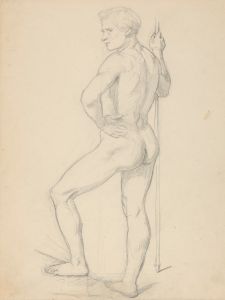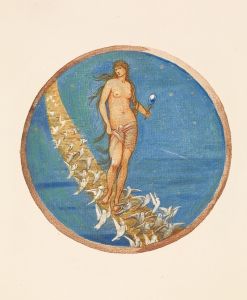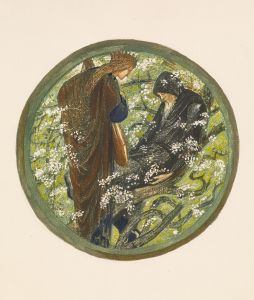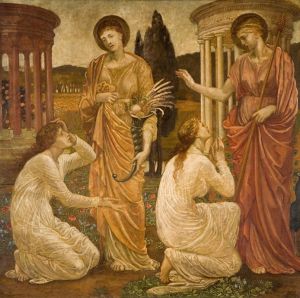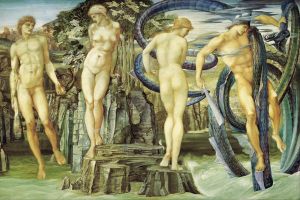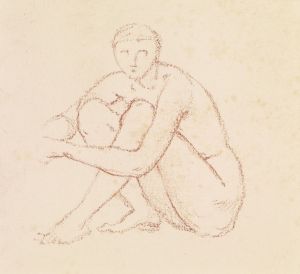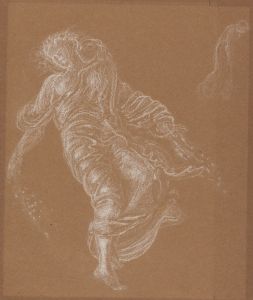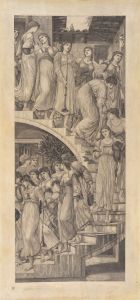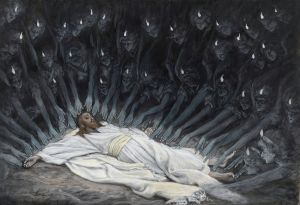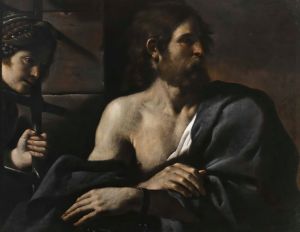
The Deliverance of St Peter from Prison
A hand-painted replica of Sir Edward Coley Burne-Jones’s masterpiece The Deliverance of St Peter from Prison, meticulously crafted by professional artists to capture the true essence of the original. Each piece is created with museum-quality canvas and rare mineral pigments, carefully painted by experienced artists with delicate brushstrokes and rich, layered colors to perfectly recreate the texture of the original artwork. Unlike machine-printed reproductions, this hand-painted version brings the painting to life, infused with the artist’s emotions and skill in every stroke. Whether for personal collection or home decoration, it instantly elevates the artistic atmosphere of any space.
"The Deliverance of St Peter from Prison" is a painting by the British artist Sir Edward Coley Burne-Jones, a prominent figure in the Pre-Raphaelite Brotherhood, a movement that sought to return to the detail, intense colors, and complex compositions of Quattrocento Italian art. Burne-Jones, known for his romantic and mythical subjects, created this work in the late 19th century, a period when he was deeply engaged in exploring themes from mythology, religion, and literature.
The painting depicts the biblical story of the Apostle Peter's miraculous escape from prison, as recounted in the Acts of the Apostles in the New Testament. According to the narrative, Peter was imprisoned by King Herod but was freed by an angel sent by God. This story has been a popular subject in Christian art, symbolizing divine intervention and the triumph of faith over adversity.
Burne-Jones's interpretation of this event is characterized by his distinctive style, which combines medieval influences with a dreamlike quality. The painting likely features Peter in a moment of awe and gratitude, as the angel leads him out of his cell. Burne-Jones's use of color and light would have been instrumental in conveying the ethereal and miraculous nature of the scene. His attention to detail and the serene expressions of the figures are typical of his work, reflecting his interest in capturing the spiritual and emotional essence of his subjects.
The composition of "The Deliverance of St Peter from Prison" would be expected to demonstrate Burne-Jones's skill in creating a harmonious and balanced arrangement, guiding the viewer's eye through the narrative. The use of light, particularly in the depiction of the angel, would serve to highlight the divine intervention and contrast with the darker tones of the prison setting, emphasizing the theme of liberation from darkness.
Burne-Jones's work often reflects his fascination with the interplay between the human and the divine, and this painting is no exception. It is likely that he drew inspiration from earlier religious artworks, as well as from his own deep interest in medieval and Renaissance art. His ability to infuse his paintings with a sense of timelessness and otherworldliness has made his work enduringly popular.
While specific details about the creation and current location of "The Deliverance of St Peter from Prison" are not widely documented, Burne-Jones's oeuvre is well-represented in major collections, including the Tate Britain and the Birmingham Museum and Art Gallery, which house many of his significant works. His paintings continue to be celebrated for their beauty, technical skill, and the way they capture the imagination, inviting viewers into a world where myth and reality intertwine.
In summary, "The Deliverance of St Peter from Prison" exemplifies Sir Edward Coley Burne-Jones's mastery of narrative painting, his dedication to the Pre-Raphaelite ideals, and his ability to convey profound spiritual themes through art.






